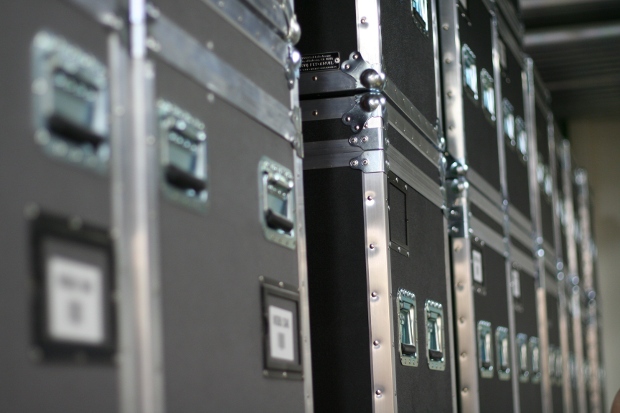
During my brief tour of the HP workstation lab, I was impressed by HP’s engineering history as well as the rigor they apply to testing and integrating hardware components. But as a customer, I know that what happens after the sale is just as important as what happens before the sale. You can have the best engineering discipline in the world, but your products will still wear out, or break, or experience weird and inexplicable failures. Long-term support for a significant financial investment like a workstation is a major consideration for customers.
In addition to their regular tech support processes, HP has two advanced resources at their Ft. Collins, CO facility to deal with long-term support of their workstations. The first is the Z-SAV (pronounced “Z Safe”). This is a warehouse of every component used in HP Z series workstations. From mainboards to DIMMs to GPUs to case fans, every single component is stored. And not just one of each, but several of each. The components are stored in locked cases and tightly inventoried.


By storing copies of each component, HP support is able to recreate any supported customer configuration for the life of the Z series line. When really weird problems arise, HP can duplicate the customer configuration and try to reproduce the errors. In extreme cases, destructive testing is performed, which is why components are stored so redundantly. The kinds of problems that get escalated to the Z-SAV are few and far between, and no specific answer was provided when I asked how one rises through the support tree to engage the Z-SAV.

The other support feature of the HP Workstation Lab in Ft. Collins is their materials sciences lab. Paul Mazurkiewicz, a PhD chemist, is on staff to aid in the development of new products and to provide in-depth chemical and physical analyses for the truly weird support problems. Mazurkiewicz lends his expertise to ensure that HP’s suppliers are complying with the company’s environmental goals, as well as to help drive new HP innovations. But the really fun part of his job is when he gets to investigate why HP workstations fail.
Mazurkiewicz described a number of interesting diagnostic techniques he uses. With a scanning electron microscope he can investigate hard drives without disassembling them, for example. This allows him to identify a crashed head or broken armature non-invasively. He can identify manufacturing errors on components and detect foreign contaminants that may impair function. The kinds of problems that get escalated to the materials science lab are even more rare than those that involve the Z-SAV, but it should be reassuring to customers that HP has this kind of expertise on hand to perform in-depth scientific analyses.
As I said in part one of this series, please excuse me if I sound like an HP shill. When HP offered me the opportunity to tour their lab, I was very excited. It’s not so much that I was thrilled with HP as I was thrilled with the opportunity to see a side of the computer industry that few get to see. I felt that this glimpse into the world of workstation research and development, as well as quality assurance and lifecycle management, would be of interest to CrunchGear readers.
I’m certain that HP’s competitors have similarly interesting development practices, and also work hard to support their customers as best they can. I’m sure that they bring unique skills and histories to their customers. As such, the value proposition of any workstation is a complex one to evaluate. Hopefully if you’re in the market for workstation-class machines, you’ve learned a thing or two and can ask your sales representatives some pointed questions about their products.